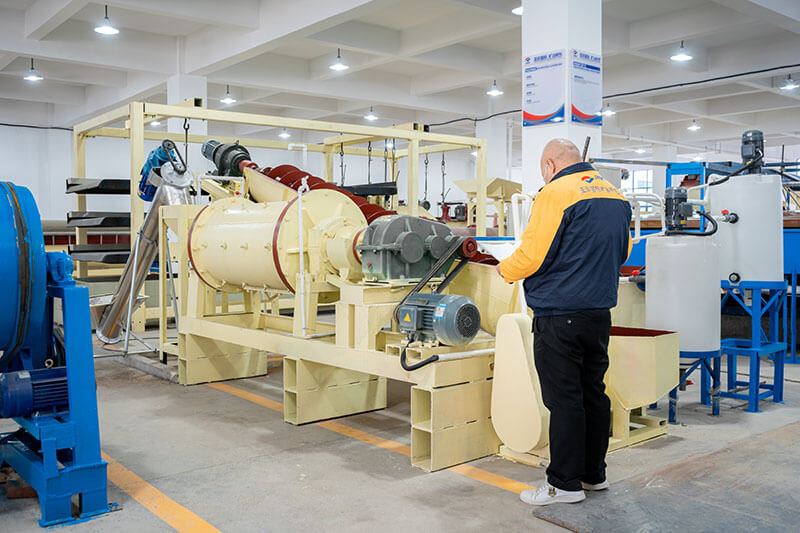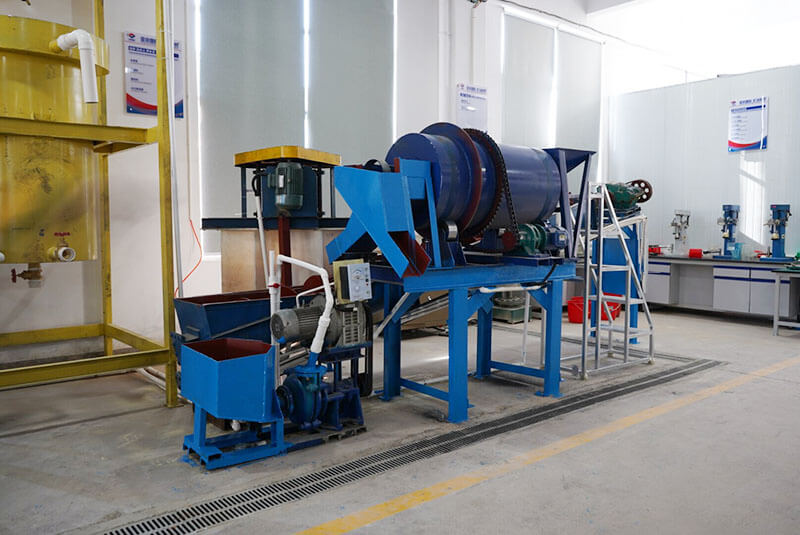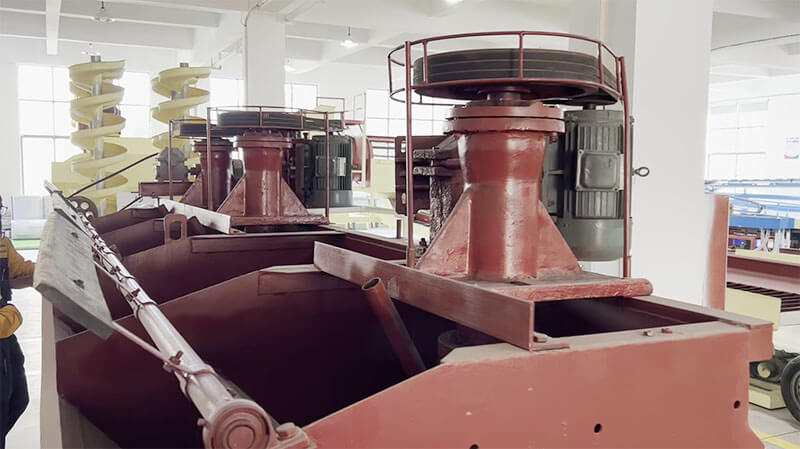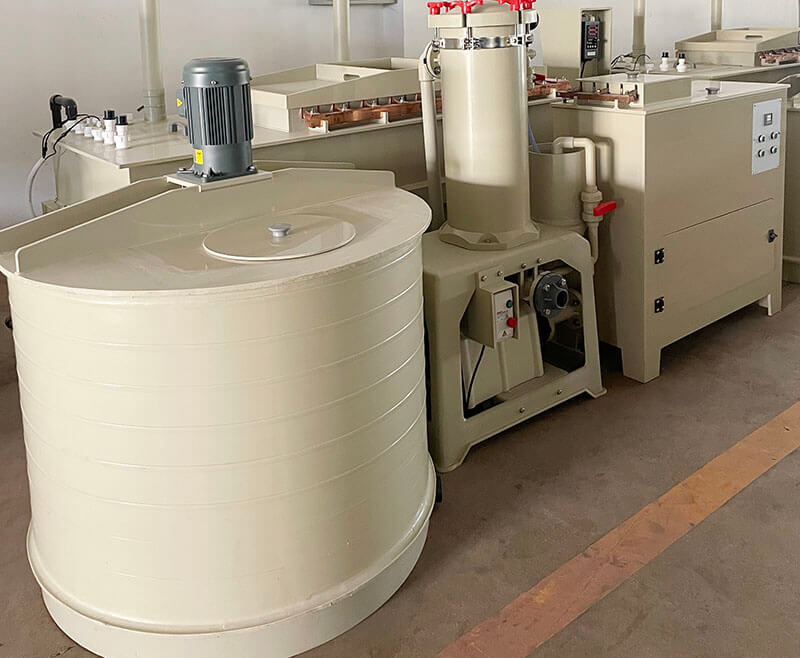Hematite is a kind of oxidized mineral, widely distributed in various genetic types of deposits and rocks, such as felsic igneous rocks, volcanic rocks, and so on. The large-scale hematite deposits are mostly related to hydrothermal and sedimentary processes. Hematite is a weakly magnetic iron ore. It has better floatability than magnetite and a wide distribution. It is one of the most essential raw materials for extracting iron, which is used as pigments, gemstone materials, ballast for ships, and even radiation shielding for medical and scientific research equipment. Hematite has a wide application in people’s daily lives. However, in the past iron ore mining process, hematite was often treated as tailings, resulting in insufficient utilization of hematite resources. Therefore, to fully develop and utilize hematite resources, it is necessary to know the beneficiation process of hematite.
Hematite Processing Stage
The processing stage of hematite mainly includes mineral crushing, screening, grinding, and grading processes.
- Crushing and screening: Put the raw ore into the vibrating feeder, then the vibrating feeder sends the raw ore to the jaw crusher for crushing. After the crushing process, the product enters the screening machine. The materials on the screen machine return to the crusher for further crushing and the materials below the screen machine are transported to the grinding machine by a belt conveyor.
- Grinding classification: The grinding classification process for hematite generally adopts two-stage operations. It usually uses dry ball mills (large beneficiation plants) or grid ball mills + wet overflow ball mills. After grinding, the following is the grading process. The overflow product enters the grading process and the remaining product returns to the ball mill for further grinding.
- Hematite separation grading equipment: According to the properties of hematite, the beneficiation method divide into flotation, magnetic, and gravity separation. The separation equipment for hematite includes flotation machines, magnetic separators, vibrating screens, spiral chutes, etc.
Each stage will use different corresponding lab mining machines for processing.
Hematite Beneficiation Testing Equipment
The equipment for this hematite beneficiation test includes a lab jaw crusher, lab hammer crusher, lab ball mill, and high gradient magnetic separator. After the beneficiation testing, we will know the mining effect of this solution and improve the process flow.
Hematite crusher- Hematite Beneficiation Testing Equipment
1. Laboratory jaw crusher
Purpose – Crush the original hematite into smaller stones:
Equipment introduction: The lab jaw crusher is suitable for rough and primary rock ores crushing with high hardness, and the effect is good. The laboratory jaw crusher is for the medium particle size crushing of various ores and bulk materials. It crushes materials with a compressive strength of no more than 320Mpa. The PE series jaw crusher has different models with a feeding particle size of 125 mm~1200 mm and is a primary crushing equipment. This equipment is for coarse, medium, and fine crushing for minerals such as limestone, calcium carbide, calcium carbide slag, shale, basalt, river pebble, bluestone, etc. It has significant effects in cement plants, sand and gravel plants, stone plants, thermal power plants for desulfurization, and calcium carbide plants, widely used in industries like mining, metallurgy, chemical industry, building materials, water conservancy, transportation, etc.
Experiment Process:
Place approximately 100mm of hematite ore into the feeding port of the jaw crusher, and after starting, crush the material to 20-30mm through mutual compression between two tooth plates.
2. Lab Hammer Crusher
Purpose – Crush the hematite ore from the jaw crusher to 0-2mm.
Equipment introduction: This machine is a hammer crusher, which crushes small stones of 20-30mm to 0-2mm. There is a screen at the discharge port of the hammer crusher to ensure that the discharge material is all 0-2mm. A hammer crusher uses a high-speed rotating hammer body to crush materials on the collision surface. It has the features of a simple structure, high crushing ratio, and high production efficiency, and is suitable for dry and wet crushing. A hammer crusher is suitable for crushing medium hardness materials, such as limestone, copper, coal, and other materials for medium and finer crushing operations.
Experiment process:
Place approximately 20-30mm of hematite ore into the feeding port of the hammer crusher. After startup, the hammerhead collides with the material directly to crush it, and then we will obtain a uniform 0-2mm ore.
The lab roller crusher is also a good choice for a secondary crushing machine.
3. Lab roller crusher
The lab roller crusher is suitable for laboratory fine crushing of coal and other medium and low-hardness ores or rocks. This machine is composed of a base, rollers, and safety springs. When working, it is driven by an electric motor through a V-belt pulley and a sprocket. The two rollers rotate in opposite directions, squeezing and crushing materials. The gap between the rollers can be adjusted appropriately within the specified range to control the particle size of the discharged material. It is for laboratories in industries such as coal, power, chemical, metallurgy, geology, and scientific research institutions. The roller crusher is suitable for crushing raw materials like coal, gangue, limestone, sulfur ore, phosphate ore, etc. This machine has the features of a simple structure, flexible adjustment of discharge particle size, stable performance, and no dust prevention device.
Hematite Grinding Equipment- Hematite Beneficiation Testing Equipment
Lab Ball Mill
Purpose: Grinding hematite to 200 mesh
Equipment introduction – A ball mill is an equipment for grinding rock and mineral materials after being crushed, materials like rock gold, copper, and other metal mines.
Experiment Process:
Pour the crushed material into a ball mill and add grinding steel balls. At this point, the ball mill rotates continuously, and the grinding steel ball inside will mill the material into fine particles.
Three types of ball mills
1. The lab cylinder ball mill
The lab cylinder ball mill is a fully enclosed intermittent grinding equipment for dry and wet processes. It is for semi-industrial laboratories such as building materials (especially cement and ceramic industries), refractory materials, metallurgy, coal, light industry, chemical industry, agriculture, and other small industrial grinding materials for ore beneficiation research. It is a transitional grinding equipment between continuous grinding and intermittent grinding. It is also a grinding equipment for artificial heavy sand separation of minerals in geological experimental work.
2. XMQ conical ball mill
XMQ conical ball mill is a small, lightweight, and multi-purpose grinding equipment used in laboratories for dry and wet purposes. This equipment has the advantages of compact structure, convenient use, small size, and lightweight. The XMQ series ball mill is suitable for grinding ores in laboratories, research units, and mineral processing plants in metallurgy, geology, chemical engineering, building materials, and coal for ore beneficiation research. It has a wide application for grinding small amounts of materials in experimental research work in mechanical, hydroelectric, light industry, and agriculture.
3. Planetary ball mill
The planetary crusher is designed for crushing, grinding, and dispersing powders of metal and non-metal materials, especially suitable for laboratory research use. It has the advantages of strong shearing, impact, and rolling abilities, which makes this machine achieve the purpose of crushing, grinding, dispersing, and emulsifying materials. The planetary ball mill is equipped with four ball milling tanks on the same rotary table. When the rotary table rotates, the ball mill rotates around the axis of the rotary table, while also rotating around its axis, performing planetary motion. The grinding balls inside the tank collide with each other during high-speed motion, grinding and mixing the sample. This machine is suitable for dry wet grinding and mixing products with different particle sizes and materials. The small particle size of the grinding product reaches 0.1 micrometers.
Magnetic separation equipment – Hematite Beneficiation Testing Equipment
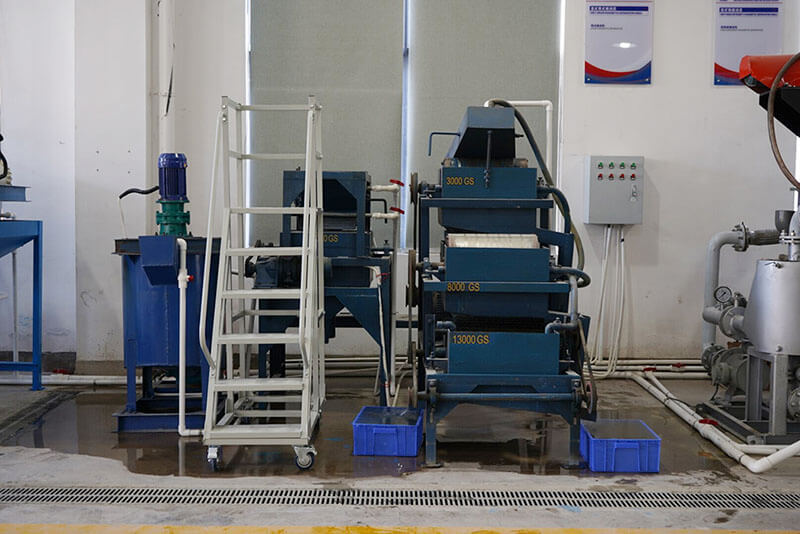
4. Wet drum magnetic separator
Purpose: To select strong magnetic minerals through a weak magnetic separator and improve the grade. A wet magnetic separator is equipment for iron ore and manganese ore beneficiation and is the mainstream high-intensity magnetic separator beneficiation equipment. A wet drum magnetic separator is a magnetic separator for iron ore beneficiation plants. It is suitable for sorting operations and replaces the magnetic dewatering tank as the concentration equipment before filtration. The process is relatively complex and needs water as the medium for selection. The wet cylindrical magnetic separator is suitable for the rough separation and selection of strong-magnetic materials with coarse particle size, such as manganese ore, magnetite, and other materials through wet or dry magnetic separation.
Experiment Process:
Pour 200 mesh hematite into a wet cylindrical magnetic separator, which reaches up to 1200GS and has two ore discharge ports. Magnetic minerals come out on one side, and nonmagnetic minerals come out on the second.
The above are the crushing, grinding, and magnetic separation equipment used for the hematite ore beneficiation test. According to the mineral properties, we will adopt different beneficiation solutions. JXSC lab mineral processing equipment manufacturer has more than 38 years of experience in mining processing, and we provide service for mining processing testing and suggestions. There is laboratory equipment for processing minerals such as gold, tin, tungsten, lead, zinc, tantalum, niobium, iron, manganese, silver, titanium-iron, etc. Lab machines include laboratory jaw crusher, hammer crusher, roller crusher, grinding equipment, lab gravity separator, screening, washing equipment, etc. Welcome to consult if you are interested in it!

